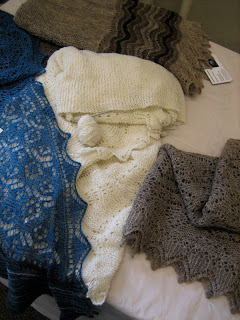Elizabeth Johnston, one of the two instructors for our upcoming class comes from Mainland, one of the Shetland Islands. These islands are part of Scotland, but if you look at a map of the area, you will see that they are due west of Norway.
During Viking times, this region was settled by the Norwegian Vikings and to this day retains a part of this Nordic heritage. Many of the place names have Old Norse origins and it's native sheep, the Shetland, is considered to be one of the Northern Short-tailed sheep along with the Icelandic, Spaelsau, Soay, Gotland, North Ronaldsay and several other northern breeds. The sheep on Shetland have played a vital role in its economy over the years and provide both meat and fleece.
Shetland wool is soft and silky and over the years has been used for many purposes. The extra soft and fine neck fleece has been used for delicate, lace shawls, while the rest of the fleece in it's multitude of natural colors has been used in the stranded knitting known as Fair Isle - the name of one of Shetland's outer islands. The small sheep that produce this wool are very hardy. They are able to survive and thrive under the harsh conditions that are quite common for this group of islands set between the Atlantic Ocean and the North Sea.
 |
| Elizabeth's knitted lace shawls |

No comments:
Post a Comment